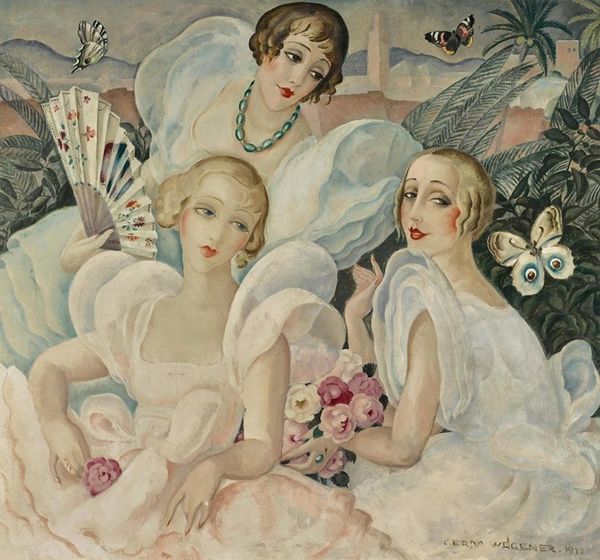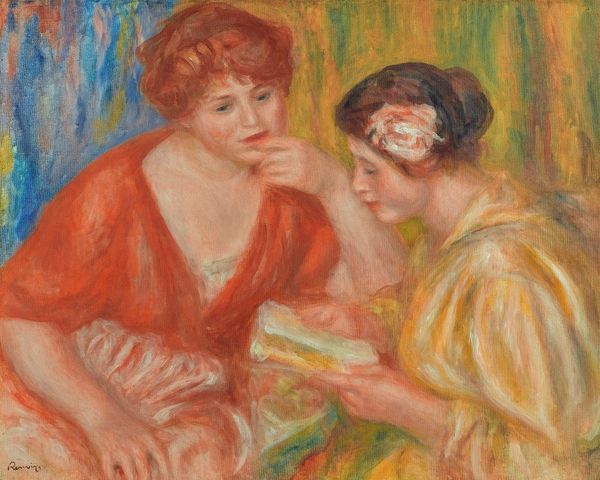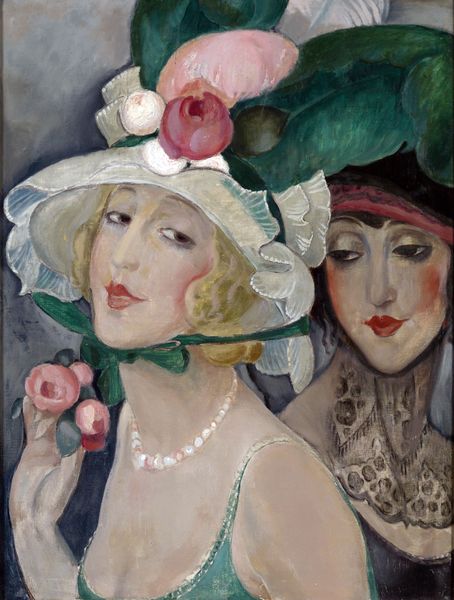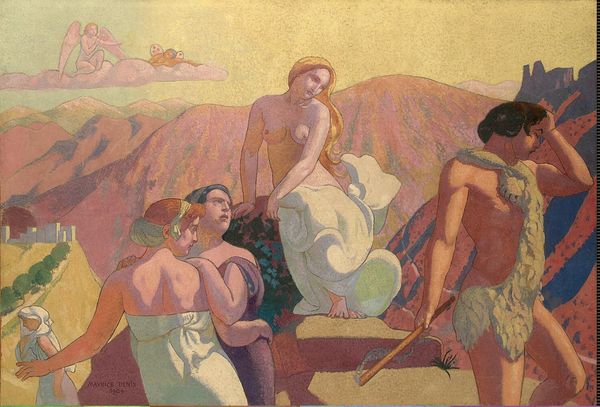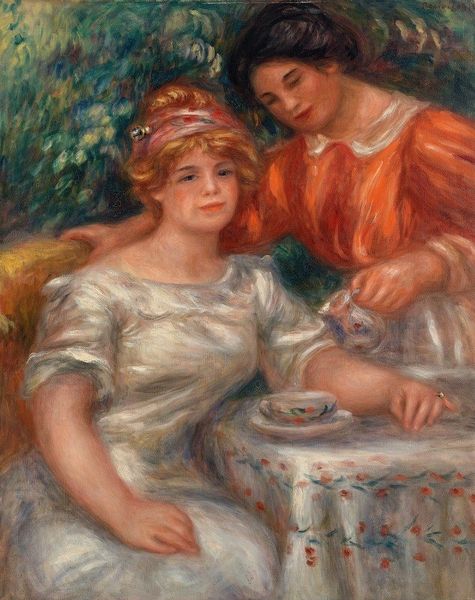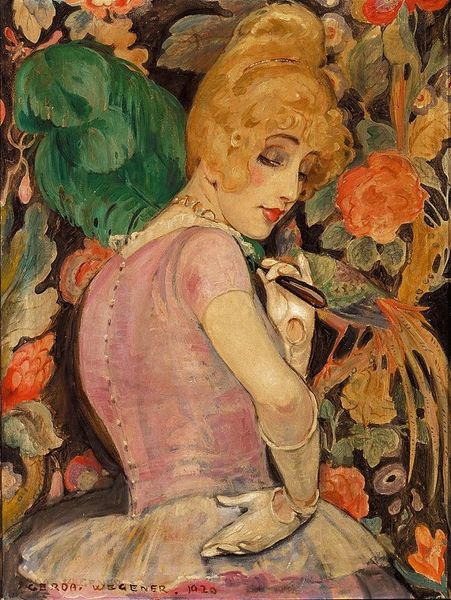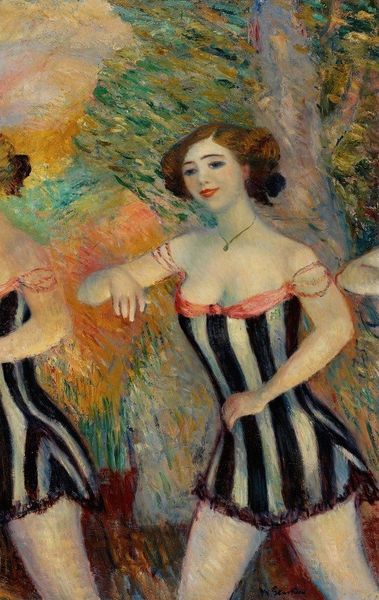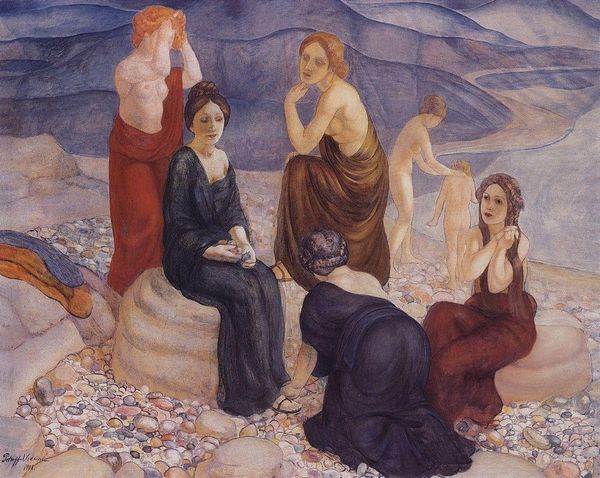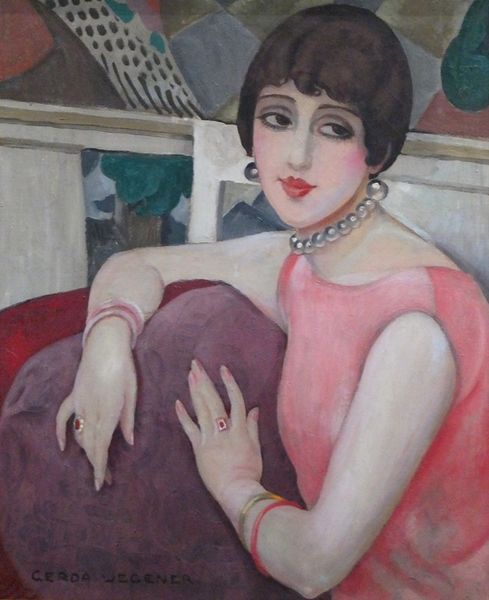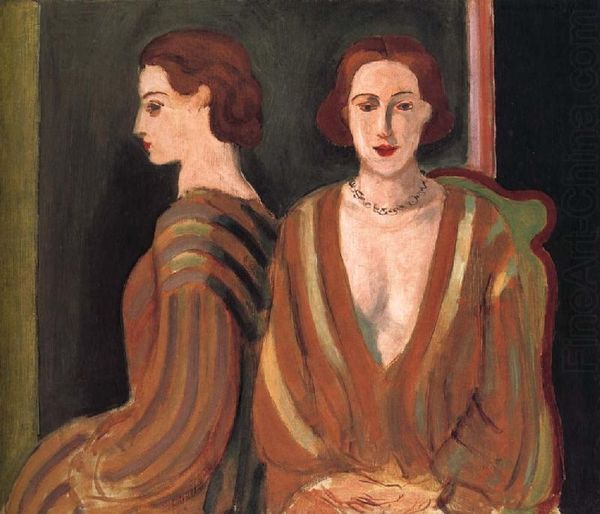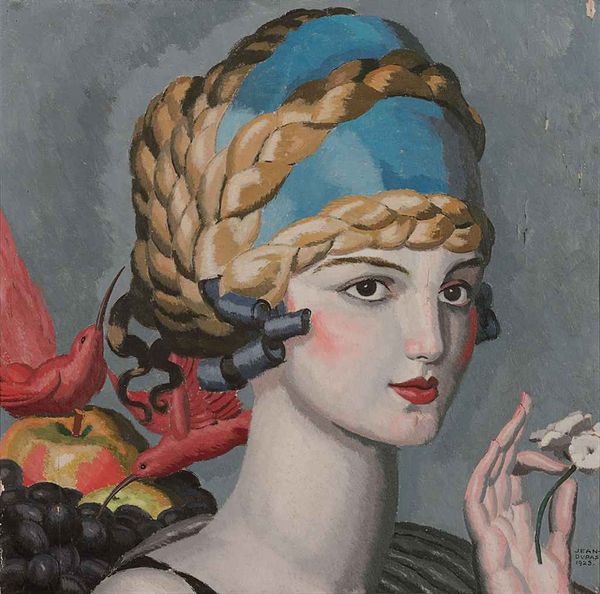
Copyright: Public Domain: Artvee
Curator: Gerda Wegener’s 1922 oil painting, "Sur la Route d’Anacapri," presents a fascinating study in form and color. Editor: My immediate reaction is how this image evokes a sense of restrained desire, those melancholic gazes cast toward separate horizons amidst a muted paradise. Curator: Absolutely. Note Wegener's deliberate arrangement of color: the fiery orange contrasts with the cool blues of the sea and sky, creating a visual tension. The composition guides the viewer's eye—a triangular structure reinforces the women's intertwined postures, mirroring each other yet diverging into individualized expressions. Editor: Right, and situated on the road to Anacapri—Anacapri itself being somewhat removed, exclusive even. This spatial dynamic echoes a larger thematic separation, doesn't it? The blonde figure clutches an apple. Is it tempting? Is she tempted? Wegener painted this in the roaring twenties when ideas of femininity, sexuality, and the "new woman" were fiercely debated, and often subverted. These signifiers may hint at the societal pressures placed on women during the interwar years. Curator: I see that. Speaking purely of form, observe the exquisite rendering of textures; how she juxtaposes the fluidity of drapery with the rigidity of jewelry, contrasting organic and geometric shapes to intensify sensory contrast. Semiotically rich as well—those cascading curls play against firm architecture; this painting contains layers within layers of symbolism that beg decoding from pure formalist considerations. Editor: Certainly the technical skill and visual structure invite deeper interrogation. Considering that Wegener lived a fascinating life as a queer artist living in Paris with Lili Elbe whose gender-affirming transition the artist notably depicted, how can this portrait painting further be explored, not as separate individuals on a single plane but as intertwined souls along parallel trajectories during times when rigid conventions tried, futilely, to constrain self-determination. Curator: Precisely. As a formal composition, its inherent qualities invite a rich discourse on structure, color, and material engagement within Gerda Wegener’s oeuvre. Editor: Yes, it’s a space where formal beauty coalesces to provoke vital sociohistorical queries.
Comments
No comments
Be the first to comment and join the conversation on the ultimate creative platform.

